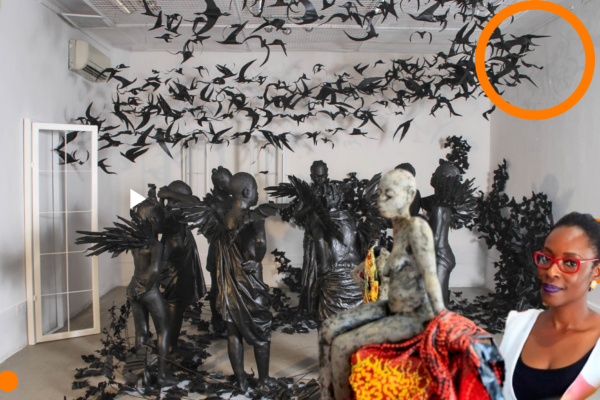All children are born artists … The issue is how to stay an artist as we get older.”
Picasso
Today, this is more evident than ever because the educational system coaches them to be less creative.
Jobs are progressively being replaced by robots and computers in today’s world. What is being taught in schools now may not lead to employment. Technology is increasingly used in math and science. Nevertheless, there’s reason to be optimistic. The primary distinction between humans and technology is that humans can be creative. As a result, people may develop new ideas, experiment with new approaches, and invent things that computers could not.
Alarmingly, our creativity may be eroding. The primary cause of this loss of invention is how children are educated. Schools worldwide regard the arts as less significant than sciences. Creative art subjects are dissuaded. When a fifth-grade girl tells her teacher that she wants to be a dancer when she grows up, her dreams are quickly thwarted.
What if, on the other hand, kids’ inventiveness is encouraged? There would be more “outside-the-box” thinkers in the world and fewer “serious” professionals afraid of delving into the unknown.
Students are taught that making a mistake is wrong. In most African countries, the grading system is entirely focused on how much you got wrong. If you got a 95 per cent, you didn’t make many mistakes; if you earned a 70 per cent, you made a lot of faults. This method prevents children from taking risks or trying something new.
If we reconsider, no response is incorrect if teachers teach to stimulate innovation. Mistakes are vital because they provide experience and fresh ideas. As things are, the educational system forces children out of their natural creativity. As adults, they are afraid to try an original thought if wrong. We must solve this problem to remain the most advanced species on the planet. In today’s world, creativity should be valued more highly.
Many experts have written about improving education, but years pass, some students graduate, others fail, and still, others drop out. The educational system remains the same: a dictator refusing to relinquish power.
Remember when you were a kid, and all you wanted to do was play? No one ever taught you how to use your imagination. You pretended to be an astronaut and fantasized about travelling through space. You posed questions like “Why is the grass green?” that no wise man could answer since you were inherently inventive.
Then came school. You were teased, mocked, and had a teacher who told you to stop dreaming and live in the present. So, how did you do at school? You learned not to question the world, to go with the flow, and that each query had only one correct solution. The “whys” you’ve always wanted to know are never on the test, and the curriculum ignores them.
Creativity is not an exam, a skill, or a program to be developed. Creativity is about seeing things in new ways and breaking down barriers that have been in your way for a long time. Hearing a song that has never been composed or witnessing a piece of art on an empty canvas are both examples of creativity. Its essence lies in its purity and ability to bring dreams to life.
Consider the following scenario: A typical classroom with happy faces. The energy in the school is fueled by the students’ eagerness to begin school. The children are asked to draw a tree by the teacher. Some pupils are gifted, while others are average, and the rest cannot imagine a tree. The teacher grades every student’s work. Some students receive an A+, while others receive a D or a failing grade.
Others who received A now believe they are incredibly talented and artistic, while those who received an F… As a result, people begin to think that they are losers and that their work is mediocre.
Their creativity is frustrated because of this “draw a tree” assignment and fades over time. This is why so many adults claim they cannot draw.
Children are “taught” to draw shapes at school. Everything is drawn “correctly.” “Do NOT colour outside the lines!” yells the teacher every time a child tries to colour something.
When teachers offer students the outline, title, and structure of their “creative writing project,” how can you expect them to be original? They give them memorized responses. You provide them with everything but the freedom to express themselves and their ideas.
Educators claim to value creativity, but it isn’t always a top priority. They undervalue risk-taking, impulsivity, and independence as creative personality traits. By emphasizing the reproduction of knowledge and obedience in class, they stifle originality.
People who can think critically and creatively are in high demand in the twenty-first century. As technology advances, robots will perform all of our fundamental tasks. On the other hand, our mission is to ensure that the next generation is full of inventors, singers, painters, and mathematicians who will elevate humanity to new heights.
Of course, memorizing is the quickest way to improve grades, gain admission to a reputable college, and secure employment. We are being educated to be able to make money. However, most people do not want to be products that live their lives in a box and eventually start businesses.
Education has the power to foster creativity, pique interest, and develop a well-rounded individual. Few have tried to disturb the cycle of sitting motionless, remembering, testing, and landing a job. Those who dared to question the established quo, such as Albert Einstein, the Wright brothers, and Walt Disney, have transformed history.
Africa is fighting its way to the top, vowing that no kid would be forgotten. This may be an opportunity to turn the tables by encouraging children’s creativity all over the continent. Let us forget the race to nowhere and give a chance for creative solutions to real-life problems. Because in life, there is no number one.



